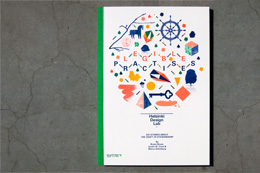This took longer than it should have. We've been back from the summer holidays for a solid week now, but as you can see there is some lag getting back into the habit of writing.
Last time I was just heading to New York to meet up with Justin for our first of three HDL case study sessions. We had a very packed day with Rosanne Haggerty and her team from Community Solutions sharing their work in Brownsville and Rodrigo Araya and Alejandro Aravena reflecting on the reconstruction of Constitución. Justin and I are now processing those conversations and distilling it with the goal of writing two short case study papers.
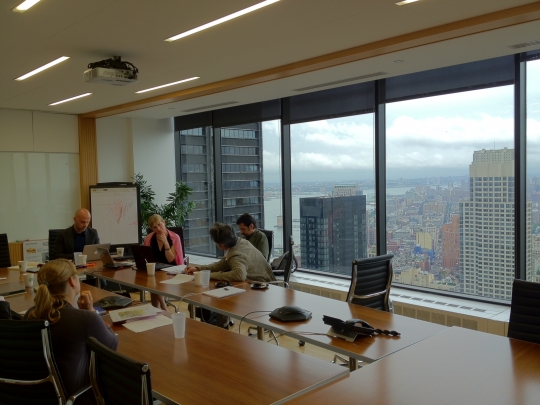
Monitor kindly loaned us one of their stunning conference rooms
On a meta level the session was instructive as well. Despite careful planning and logistics (and excellent facilities thanks to the Monitor Group), the agenda for the day was too ambitious. We spent more time on introductions and basic context than expected and felt the crush of the clock at the end of the day. In the next two sessions we are going to attempt to spend a day and a half total. Try, learn, adjust, repeat.
Next week Marco and I will zip to London to conduct the second (day and a half!) session, this time with Nesta and IDEO. Nesta are bringing their Creative Councils project and IDEO are going to share some work they've done with the US government. In other words, there's not a direct overlap in terms of content. Huh?
In organizing these case study sessions we've paired teams with slightly different content focuses as a way of ensuring that the conversation is about how innovation gets done. Our hypothesis was that by pairing up mismatched content the overall conversation would naturally veer towards the intersections between the two groups, the methods and approaches that they use to move forward. The first tentative evidence we have from the session in New York is that our hypothesis was correct: the conversation swayed back and forth between 'what' and 'how' but the room was most engaged and excited when discussing the practices rather than the specific details of poverty alleviation or urban planning.
With each case we're trying to understand the work on two levels: the 1:1000 high level overview and the 1:1 on the ground reality. The high level view is about getting the narrative of the project in order before we zoom in to look at specific important and instructive moments where something critical happened such as when funding was secured, where a key stakeholder gave their buy in, where the scope of the project changed, and so on. How did the project prepare for this, how did they weather it, and how—ultimately—did they come out the other side successfully? The impetus for this as a focus comes from a number of threads, but we can sum it up quite simply with a quotation from none other than the American boxer Mike Tyson:
Everyone has a plan until they get punched in the face.
Back here in Helsinki, our Brickstarter and Open Kitchen projects are revving up. We were very pleased to see a nice piece on Brickstarter on Wired.com last week and that gave up the impetus to do a bit of a press roundup.
Dan and I were in Kalasatama to meet with Antto and Elina about Open Kitchen. That is trending in the right direction and is about to get very busy. Next week we'll film a quick video as a Call for Applicants that should go public in early September. We want to make sure the eyes are dotted yadda-yadda-yadda before it all goes out the door, so more on this soon.
This year's Flow Festival features an installation by Nene Tsuboi and Åbäke depicting a number of unbuilt designers for Helsinki's Grilli kioskis, the city's hot dog stands. They asked me to contribute a micro manifesto about food and the street, to which I submitted the following. See also: Helsinki Street Eats and Dan's earlier piece for Artek's Manifest I. Lots of manifest(o)s.
The most visible food in the streets of Helsinki today has already passed through the human body and been reborn into the world as site specific installations of urine and temporary constructions of vomit. While we're a city that's comfortable with pissing in the street, eating is puzzlingly hidden. It's mostly reserved for the drunken stumble to a grilli (which everyone hopes to forget the next morning) and slurping porridge in a tori (where one is hidden amongst the ubiquitous orange tarps).
Despite Helsinki's architectural commentary by bodily function we have all the right ingredients for an urban culinary renaissance. In 2012 Nordic food is the envy of the world and Helsinki's specific architectural heritage gifts it a variety of iconic lippakioskis and grilli structures waiting to be linked into a city-wide network of grub hubs. If only they served something worth remembering.
Oh but they will! Bring on the curry siika, poro bratwurst, and birch soda. This is anything but a trend. It's a sign of a culture that embraces diversity, in a meal and on the street. Street food is about relearning how to make the city our own not just for occasional festivals but a real—and really delicious—part of everyday life.
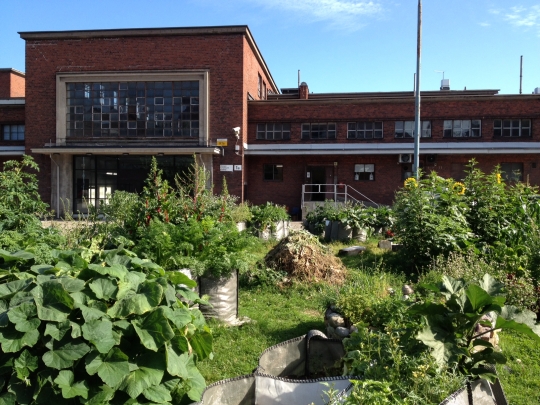
Tukkutori's edible garden is blooming very well in a series of grow bags. This will a great addition to Kalasatama when it's finished later this year.
In both Brickstarter and Open Kitchen we're increasingly turning our attention to how the projects will grow beyond Sitra. How far will we take the work? When do we look for partners to carry it forward? What does that handoff look like? This is a necessity of the work, on one hand, but we're also trying to use it as a point of innovation in and of itself. From the perspective of strategic design is there a different way to transition projects from in house to out of house, for instance? Early days on these thoughts.
Marco was quoted talking about Low2No and our Design Exchange Programme in the July issue of Wallpaper Magazine. They don't seem to have the article online, but the author has posted the full text on his blog. And speaking of Design Exchange, our second placement has started work at the Helsinki Department of Social Services. She will introduce herself soon on the DEP blog.
Juha Kronqvist is himself an embedded designer doing good work with a hospital in central Finland and Aalto University students. Recently he released this video that shows some of their paper ptototying of hospital spaces. You can also read more on their blog.
Lately we've been holding our project meetings in a construction site. The renovation of Sitra's 12th floor that we have been working on for a couple months now is finally complete. The space is light, bright, flexible. Personally I'm very happy with the way it has come together. It's definitely a step forward for our facilities and will take some getting used to, but the net effect is that we now have the kind of collaborative work environment that was hard to come by previously in the Sitra tower. Once people have settled in to the space we'll be posting some further thoughts on the relationship between workspaces and working cultures.
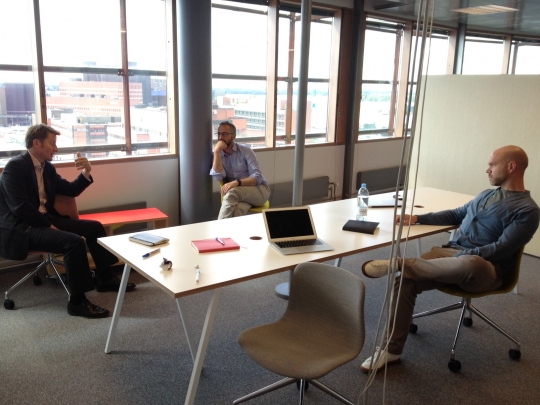
When this was taken there was still some electrical work to be done, as you can see
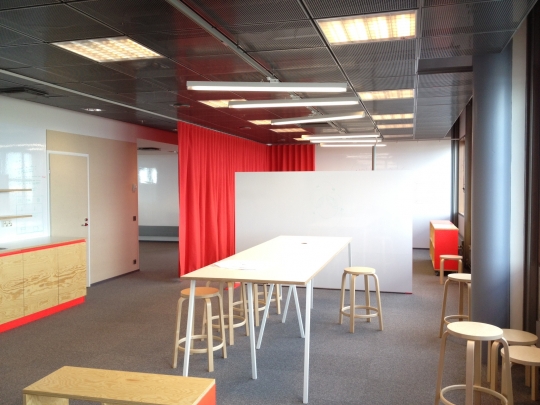
Our new kitchen, featuring an invisible coffee machine (until we get a new one)
Last but not least, if you are in Helsinki on Tuesday, August 14th you are very welcome to stop by the Paviljonki located between the Design and Architecture museums in Ullanlinna for a double whammy of strategic design.
Dan will be there to talk about his Strelka press book Dark Matter and Trojan Horses: A Strategic Design Vocabulary and I'll be sharing In Studio: Recipes for Systemic Change. Come have a coffee with us!


